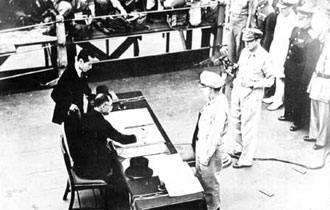Pages |
What if Bop told her he was hungry? In this case, too, Alissa's information access is secondhand, since she is not able to feel his hunger. Thus indirectness of information or how she acquired information dictates which grammar pattern she should use when speaking in this language. In other words, Onaka ga suita acknowledges that the speaker has direct access to that information (and therefore this sentence can only be uttered by the person experiencing hunger), while Onaka ga suita yō da acknowledges that the speaker did not obtain direct access to this information but acquired it only secondhand, through hearsay, observation, and so forth. From this and other numerous examples, one can say that the Japanese language is quite sensitive to expressing how information has been obtained and the user must make a clear indication when speaking.
The same can be said about one's psychological state. If Bop feels sad, he'd say Boku wa kanashii. But to say "Kaori is sad," Japanese would not allow and Bop would not say *Kaori wa kanashii "Kaori is sad." Instead, Bop would say something like Kaori wa kanashigatte iru or Kaori wa kanashi sō da "Kaori appears to be sad." Again, this is because the language makes a clear distinction between information about which the speaker has firsthand knowledge (as in the case of stating "I am sad") and one about which the speaker obtained secondhand (as in the case of stating "Kaori is (showing signs of being) sad" or "Kaori is (appears to be) sad"), not only in this example but also in a number of related areas.
Degree of Confidence in the Veracity of Information, as Controlled in the Choice of Nominalizer when Embedding
Handling new information in a special way also shows up in the choice of how information is quoted in a sentence. Take for instance sentences like
7. Yukari ni ojisan ga kita koto o tsutaeta
I told Yukari that her uncle arrived.
8. Yukari ni ojisan ga kita tte tsutaeta
I told Yukari that her uncle arrived.
The distinction made here in Japanese does not appear to come through in English. In sentence 7 the speaker believes that Yukari's uncle arrived is true, while, in sentence 8, the speaker is neutral. You can see that a grammar distinction is made about whether or not the speaker believes that information obtained is true or she is neutral about its veracity. In addition to this nominalizer koto, Japanese has another no. Both koto and no are used for information that the speaker thinks is true, while to, a bit more like quoting, allows the speaker to be neutral about the quality of information.
How was Information Received?
The language is also sensitive to how information is obtained and this shows up in grammar. Consider the following examples, all essentially stating that "It will rain today." The last bits of each of the sentences-the predicate parts-differ from each other.
Furimasu in 11 is used when the speaker is very confident about raining, that it will rain.
Pages |











